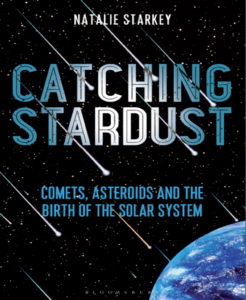I have written two popular science books: ‘Catching Stardust: Comets, Asteroids and the Birth of the Solar System‘ and ‘Fire & Ice: The Volcanoes of the Solar System‘. Please read on for more information about the books below.
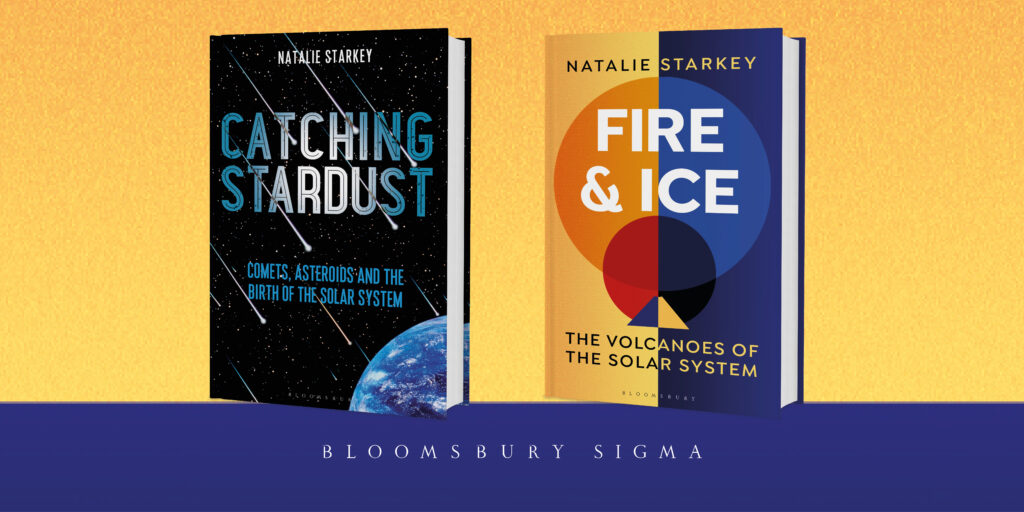
Fire & Ice: The Volcanoes of the Solar System can be ordered here.
Fire & Ice: The Volcanoes of the Solar System
The volcano – among the most familiar and perhaps the most terrifying of all geological phenomena. However, Earth isn’t the only planet to harbour volcanoes. In fact, the Solar System, and probably the entire Universe, is littered with them. Our own Moon, which is now a dormant piece of rock, had lava flowing across its surface billions of years ago, while Mars can be credited with the largest volcano in the Solar System, Olympus Mons, which stands 25km high. While Mars’s volcanoes are long dead, volcanic activity continues in almost every other corner of the Solar System, in the most unexpected of locations.
We tend to think of Earth volcanoes as erupting hot, molten lava and emitting huge, billowing clouds of incandescent ash. However, it isn’t necessarily the same across the rest of the Solar System. For a start, some volcanoes aren’t even particularly hot. Those on Pluto, for example, erupt an icy slush of substances such as water, methane, nitrogen or ammonia, that freeze to form ice mountains as hard as rock. While others, like the volcanoes on one of Jupiter’s moons Io, erupt the hottest lavas in the Solar System onto a surface covered in a frosty coating of sulphur.
Whether they are formed of fire or ice, volcanoes are of huge importance for scientists trying to picture the inner workings of a planet or moon. Volcanoes dredge up materials from the otherwise inaccessible depths and helpfully deliver them to the surface. The way in which they erupt, and the products they generate, can even help scientists ponder bigger questions on the possibility of life elsewhere in the Solar System.
Fire and Ice is an exploration of the Solar System’s volcanoes, from the highest peaks of Mars to the intensely inhospitable surface of Venus and the red-hot summits of Io, to the coldest, seemingly dormant icy carapaces of Enceladus and Europa, an unusual look at how these cosmic features are made, and whether such active planetary systems might host life.
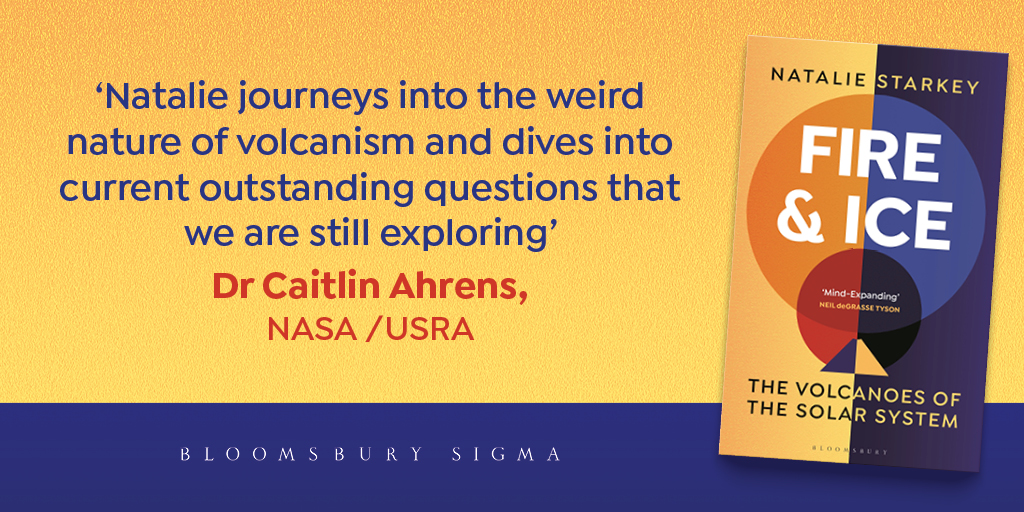
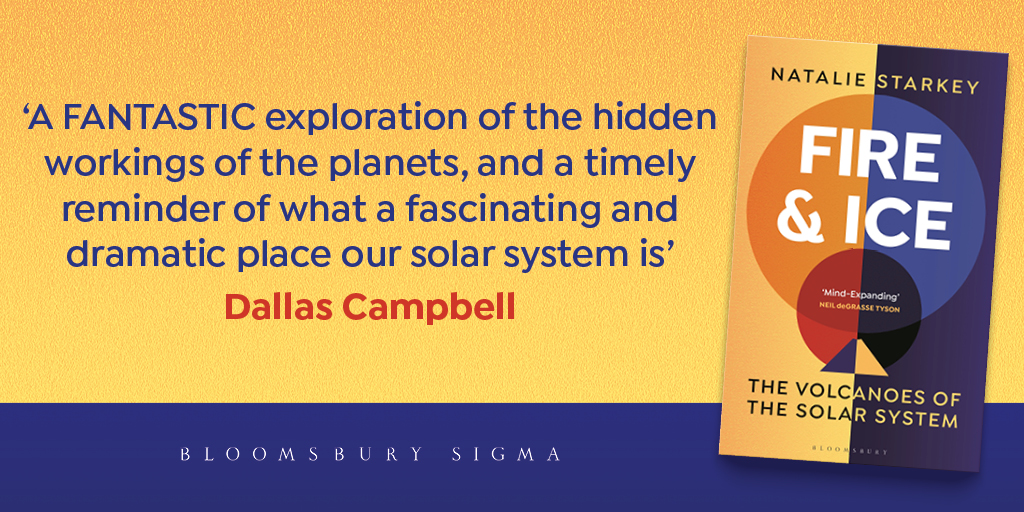
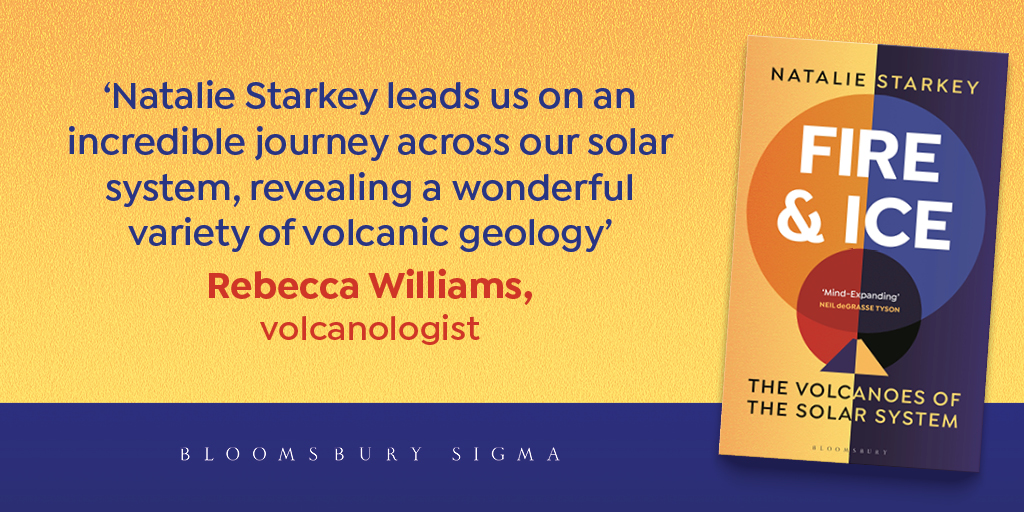
Catching Stardust: Comets, Asteroids and the Birth of the Solar System
My book Catching Stardust: Comets, Asteroids and the Birth of the Solar System can be ordered here!
Synopsis: Icy, rocky, sometimes dusty, always mysterious – comets and asteroids are among the Solar System’s very oldest inhabitants, formed within a swirling cloud of gas and dust in the area of space that eventually hosted the Sun and its planets. Locked within each of these extra-terrestrial objects is the 4.6-billion-year wisdom of Solar System events, and by studying them at close quarters using spacecraft we can coerce them into revealing their closely-guarded secrets. This offers us the chance to answer some fundamental questions about our planet and its inhabitants.
Exploring comets and asteroids also allows us to shape the story of Earth’s future, enabling us to protect our precious planet from the threat of a catastrophic impact from space, and maybe to even recover valuable raw materials from them. This cosmic bounty could be as useful in space as it is on Earth, providing the necessary fuel and supplies for humans as they voyage into deep space to explore more distant locations within the Solar System.
Catching Stardust tells the story of these enigmatic celestial objects, revealing how scientists are using them to help understand a crucial time in our history – the birth of the Solar System, and everything contained within it.
Reviews for Catching Stardust:
“Natalie Starkey has packed this book full of information on the minor bodies of our solar system, which are key to understanding how things got the way they are today – a must-have for anyone interested in where we came from.” – Matt Taylor, ESA Rosetta Project Scientist.
“A fast-paced journey through time and space, under the enthusiastic guidance of space geologist Natalie Starkey. Highly recommended.” Monica Grady, Professor of Planetary Sciences, The Open University.
“Catching Stardust describes humanity’s place in the universe, laying out the pivotal role asteroids and comets play in our origin. Dr. Starkey combines her breadth of knowledge and a keen ability to present and interconnect concepts including Earth’s geology, planetary exploration, and the compositional insights hidden in samples of small bodies. Catching Stardust builds a strong case why continuing to explore small bodies is so important to understanding our past and in shaping our future.” Jessica Sunshine, Professor of Astronomy, University of Maryland.
“Kudos for Catching Stardust, an enjoyably engaging recount of the role that comets and asteroids play in teaching us how our Solar System formed and evolved over more than 4.5 billion years. The focus is on advances in the past 25 years and includes current thinking and unanswered questions that is both expertly and accurately written. It reads like an adventure tale.” Lucy McFadden, Emerita at NASA Goddard Space Flight Center.
“Both highly informative and intriguing, Starkey successfully crafts an engaging narrative while delivering a bus-load of trivia in an engaging and accessible manner. This is definitely one for geologists and future spacefarers alike.” 5 star review, ‘How It Works’ Magazine.
“What stands out about this book, however, are the chapters describing two recent missions to comets: Stardust and Rosetta. Natalie Starkey’s experience working on these missions has enabled her to provide clear and insightful descriptions of them and their results, with a few wonderfully random details thrown in.” 5 star review by Penny Wozniakiewicz for ‘The Sky at Night Magazine’.
“This book tells you everything you could possibly want to know about comets and asteroids in a way which can be understood by someone without a scientific background. Catching Stardust is written with great zest and enthusiasm, and with a conversational, rather than an academic tone. Catching Stardust is a great read for anyone wishing to find out about asteroids and comets, and their place in space and on Earth.” AboutMiltonKeynes.co.uk
“Starkey makes this dense subject readily accessible to all, while downplaying her own significant contributions. A top-rate popular-science title.” Dan Kaplan, Booklist Online
“Geologist Starkey expertly details the current understanding of comets and asteroids, and how they function as snapshots of the universe at an earlier point in time, thereby providing insight into such areas as the formation of the solar system and the possibility of extraterrestrial life … The book provides an informative and valuable introduction to the field, from an author clearly knowledgeable and passionate about her work.” Publisher’s Weekly.
“In an expert account, Starkey, a British geologist and space scientist who lives in California, argues that particles, rocks, asteroids, and comets deserve more attention. … A successful introduction to the hitherto neglected bits and pieces of our solar system.” Kirkus Reviews.
“In her debut book “Catching Stardust,” space scientist Natalie Starkey breaks down misconceptions about comets and asteroids while delving into some of the reasons why it is so vital that we study them. … She doesn’t shy away from controversial topics, either — she tackles the topics of asteroid mining and asteroid collision with factuality, openness, and ease. And, while some of the terms and scientific concepts in the book might seem intimidating at first, Starkey does an expert job laying out explanations in a way that is uniquely accessible.” Chelsea Gohd, Space.com
“The highlight of Catching Stardust for me was how Starkey champions the relevance of scientific research, and the wider, real-world benefits “astronomers-having-fun” brings. Since she is a host on Neil deGrasse Tyson’s StarTalk Radio podcast, you might have already guessed Starkey is a good science communicator. And she brings this flair to what is, unbelievably, only her first book. Another excellent addition to the Bloomsbury Sigma imprint and a great example of well-written popular science.” Leon Vlieger for NHBS and The Inquisitive Biologist

